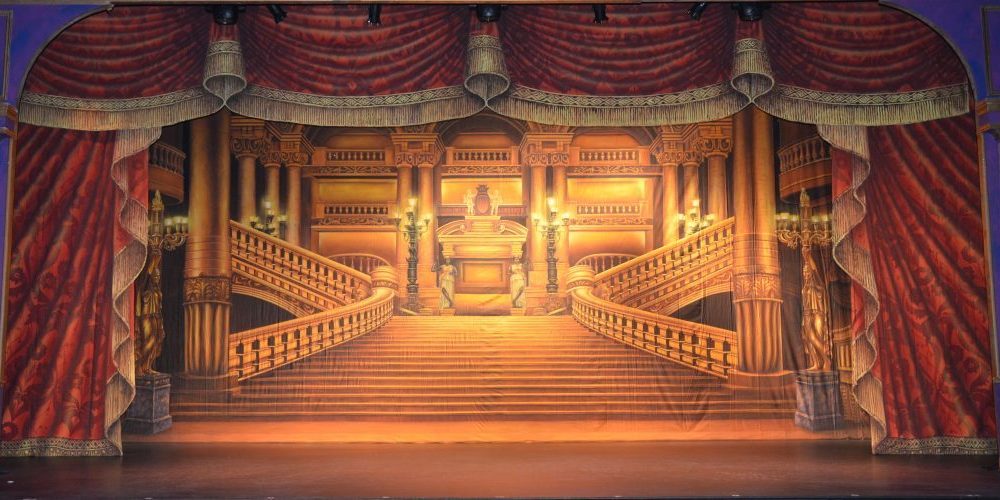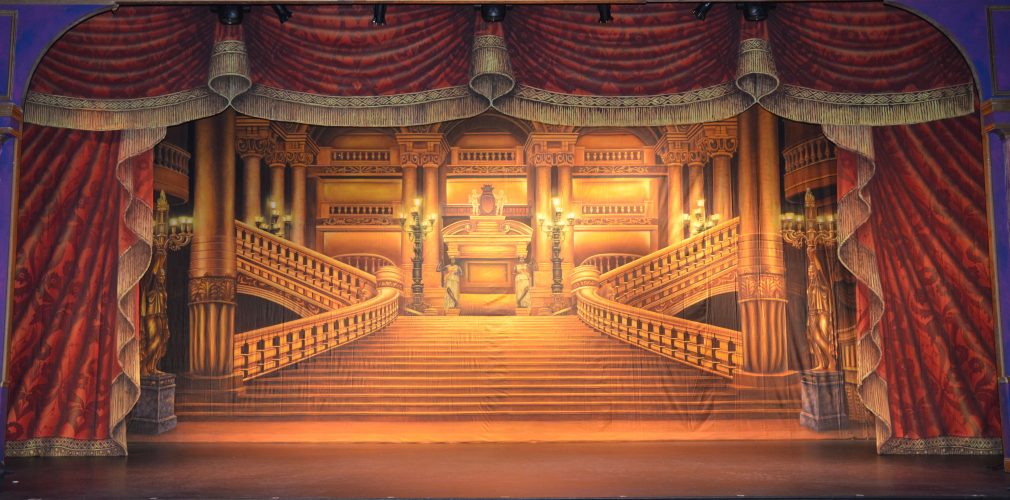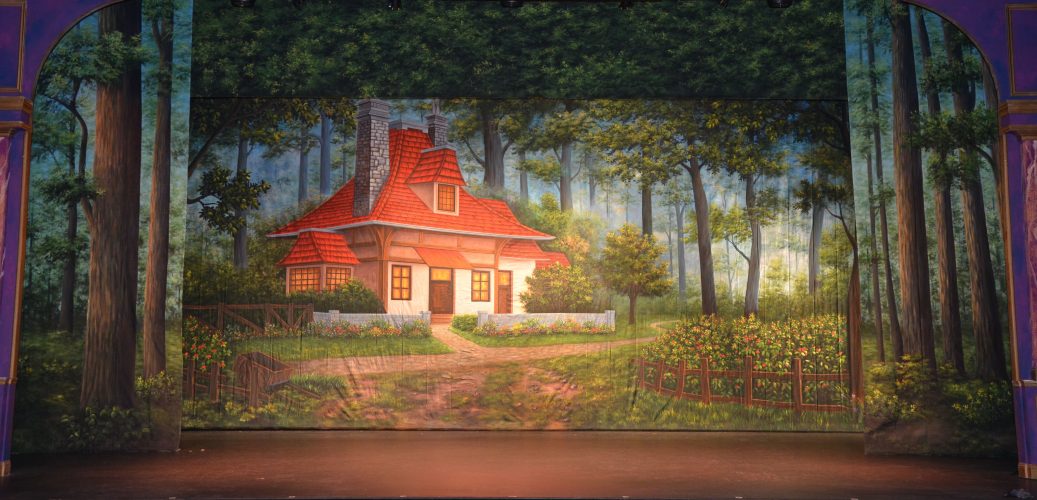Improving On-Stage Imagery With Headers and Legs
Headers and legs find homes in all sorts of stages shows and special events. They both add scenery and allow directors to better handle the logistics of their stage. Often, we design them to use in conjunction with a particular backdrop. However, savvy directors often mix and match drops with headers and legs in unique ways. With proper planning and a little creativity, headers and legs quickly become more useful than they may appear.
What are stage headers and legs?
Headers and legs are additions to stage scenery that compliment traditional backdrops. Headers (also called teasers ) are horizontal pieces that are most often rigged above traditional drops. Legs are vertical pieces that can be used on the outer borders of traditional drops. You can also hang legs at other locations throughout the stage to compliment or contrast existing scenery. While both work to increase the imagery that you are presenting to your audience, they can also satisfy functional needs. (For example, legs can provide cover to the stage wings where actors and tech crews will be working during the production.)
How can a director best use headers and legs?
Traditionally, directors use headers and legs to create a proscenium. This is a themed border around a stage area that normally remains unchanged during a production. Even as your crew switches out backdrops and set pieces, the proscenium remains constant. For instance, our Victorian Crimson Curtain headers and legs were designed specifically for directors who needed a proscenium that resembled a classic stage. Here you can see them used alongside our 40′ x 18′ Paris Opera House Grand Foyer to create a classy scene. (While hiding unsightly elements like stage rigging.)
Increase the size of the staging area and provide a focal point
In contemporary theatre, headers and legs have taken on a much larger role. You can hang these cohesively with backdrops to provide a larger display of imagery. This vastly increases the size of your stage. Pictured below we have used the same Victorian Crimson Curtain header and leg package, along with our 25 ‘x 15′ Buffalo Bill Presents backdrop. Using the header and legs in this manner increased the width of the staging area from 25′ to 40′ . By drawing the legs in a bit, configuring them to overlap the backdrop by around 3’, they have served a double purpose, as they now also highlight the backdrop and make center stage a focal point for the audience.
Add depth to the stage while mixing up your imagery
You can take your scenery technique to another level by hanging headers and legs several feet in front of a traditional drop. This still gives you more scenery, and it immediately adds depth to your stage. Many directors use our forest themed headers and legs to create settings that immerse their casts in a wooded area. When using legs to create depth, hang them at slight angles (35° or less is often sufficient). This increases the appearance of depth, widens your stage, and gives you coverage for your wings. Be sure to take advantage of the pole pockets at the bottom of the legs. If you neglect to weight the legs they are likely to shift during your production, causing a distraction and potentially revealing your wings to the audience.
Here we have used our Tranquil Woods header and leg package in front of our Belle’s Cottage drop. Combining these imagery options immediately extended the visual continuity of the potential scene, gave the stage a more pronounced display of depth, and hid the backstage area.
Contrast background scenery and create a unique look
In some instances, directors use headers and legs to provide contrast. Depending upon your preferences, you can use headers or legs atop a traditional backdrop. This allows you to add pizzazz to plain colored drops, or to break up the scenery that your main drop is providing. For instance, you can layer legs with a vibrant design over a plain drop to create a unique stage setting. This technique is often used at dance recitals and concerts, but you can also apply it to theatrical productions. As for breaking up or adding to a more detailed main drop, hanging legs with complimentary scenery in front of a main drop changes the overall look of the stage and allows you to customize your imagery for specific scenes. In some instances Directors and will even use legs alone to provide visually rich elements that break up the stage.
We took all the images in this post on a professional stage (the Largo Cultural Center) with very basic white lighting. This type of lighting is harsher than the lighting schemes that an experienced Lighting Director would use. We purposely chose extremely standard lighting in order to show the simplest way to use theatrical headers and legs with backdrops. Well planned lighting can work in tandem with your backdrops to bring out their detail. It also can help to blend colors onstage, as colored lighting will work directly with your drops and set pieces to create a mood.









